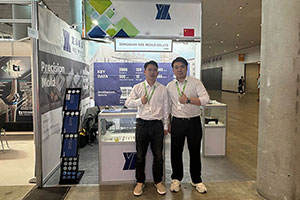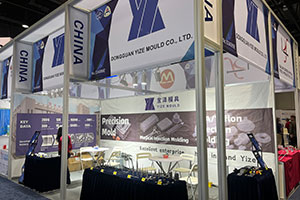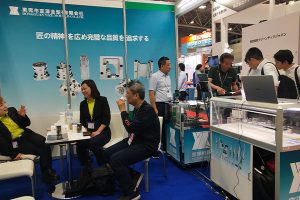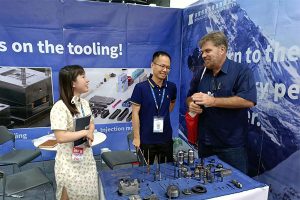Corrosion Resistance of Tungsten Carbide
I. Introduction: The Strategic Value of Corrosion Resistance in Tungsten Carbide As an indispensable high-performance alloy material in modern industry, tungsten carbide (WC) occupies a core position in aerospace, precision […]
I. Introduction: The Strategic Value of Corrosion Resistance in Tungsten Carbide
As an indispensable high-performance alloy material in modern industry, tungsten carbide (WC) occupies a core position in aerospace, precision molds, medical devices, and other high-end fields due to its high hardness, strength, and excellent wear resistance. Among its comprehensive properties, corrosion resistance directly determines its service life and reliability under complex environmental conditions. This article systematically analyzes the formation mechanisms and optimization paths of tungsten carbide’s corrosion resistance from four dimensions—chemical composition, preparation processes, surface modification techniques, and environmental adaptability—providing theoretical support and practical guidance for engineering applications.
II. Chemical Composition: The Material Foundation of Corrosion Resistance
The primary components of tungsten carbide are the hard phase (WC) and the binder phase (Co, Ni, etc.), with tungsten content typically exceeding 80%. Tungsten’s high melting point (3,410°C), low chemical reactivity, and stable crystal structure endow the tungsten carbide matrix with exceptional resistance to chemical erosion. Studies show that when tungsten content increases to over 90%, the mass loss rate of tungsten carbide in strong corrosive media such as hydrochloric and sulfuric acid decreases by more than 60%.
Notre activité : pièces en carbure, pièces de moule, moules d'injection médicale, moules d'injection de précision, moulage par injection de téflon PFA, raccords de tubes PFA. email : [email protected],whatsapp:+8613302615729.
Additionally, the synergistic effects of alloying elements significantly influence corrosion resistance:
- Cobalt (Co): As a common binder phase, its content should be controlled between 6% and 12%. Excessive cobalt can induce galvanic corrosion, accelerating localized attack, while an appropriate amount optimizes grain boundary structure and enhances density.
- Chromium (Cr) and Molybdenum (Mo): Adding 3%–5% Cr or Mo forms a passive film at grain boundaries, improving pitting resistance in chloride environments by up to threefold.
- Impurity Control: Iron (Fe), oxygen (O), and other impurities must be strictly limited to below 0.1%, as they can act as corrosion initiation sites, causing a sharp decline in corrosion resistance.

III. Preparation Processes: Microstructure Determines Macroscopic Performance
- Powder Metallurgy Method:
By uniformly mixing ultrafine WC powder (particle size <0.5 μm) with binder phases and processing via cold isostatic pressing and vacuum sintering (1,400–1,500°C), tungsten carbide with fine grains (<1 μm) and homogeneous microstructure can be obtained. This structure extends corrosion medium penetration paths by over 50%, significantly enhancing corrosion resistance. - Hot Isostatic Pressing (HIP):
Treating under 200 MPa pressure and 1,200°C eliminates porosity (reducing porosity from 3% to <0.1%), improving corrosion resistance by two grades. An aerospace company extended the service life of tungsten carbide components in marine environments from 2 years to 8 years using HIP. - Gradient Structure Design:
Adjusting composition gradients between surface and core layers (e.g., refining surface WC grains to 0.2 μm) creates a “hard barrier + tough matrix” composite structure, simultaneously enhancing corrosion resistance and impact toughness.
IV. Surface Modification Techniques: Building Protective Barriers
- Physical Vapor Deposition (PVD):
Depositing hard coatings such as CrN or TiAlN (2–5 μm thick) reduces corrosion rates in acidic media by 80%. An automotive mold manufacturer increased mold lifespan from 50,000 cycles to 200,000 cycles using PVD coatings. - Chemical Conversion Coatings:
Forming 1–3 μm dense oxide films via chromate or silane treatments extends salt spray resistance from 48 hours to over 500 hours. - Laser Cladding:
Melting Ni-based alloy layers (0.5–1 mm thick) onto tungsten carbide surfaces creates a metallurgically bonded protective layer, maintaining stability in high-temperature corrosion environments (600°C).
V. Environmental Adaptability: Scenario-Based Solutions
- Acidic Environments:
In strong acids (pH <2), tungsten carbide with >5% Cr content and PVD coatings is recommended. A chemical equipment manufacturer extended maintenance intervals from 3 months to 18 months using this approach. - High-Temperature Oxidation Environments:
Adding 0.5%–1% rare earth elements (e.g., Y, La) inhibits oxide film spallation at temperatures >500°C. Experiments show a 70% reduction in oxidation weight gain at 800°C for rare earth-modified tungsten carbide. - Marine Environments:
For Cl⁻ erosion, a combination of ultrafine-grained tungsten carbide and diamond-like carbon (DLC) coatings reduces corrosion current density in 3.5% NaCl solutions from 10⁻⁵ A/cm² to <10⁻⁷ A/cm².
VI. Conclusion and Outlook
The corrosion resistance of tungsten carbide results from the synergy of chemical composition design, preparation process control, surface modification techniques, and environmental adaptability optimization. Future advancements will focus on:
- Developing eco-friendly low-cobalt, high-tungsten materials;
- Promoting additive manufacturing technologies like laser-arc hybrid processes;
- Establishing a corrosion resistance database and standardized evaluation system for tungsten carbide.
Under the “dual carbon” goals and high-end manufacturing upgrades, enhanced corrosion resistance will enable tungsten carbide to provide more reliable solutions for strategic fields such as new energy equipment and deep-sea exploration, driving industrial civilization toward green and intelligent transformation.
Articles connexes
- Analysis of the Manufacturing Process of Tungsten Carbide Dies
- How to Ensure the Precision Stability of Tungsten Carbide Dies After Long-Term Use
- Protection Strategies for Tungsten Carbide Dies in High-Temperature and High-Humidity Environments
- The Environmental Impact of Packaging Materials for Tungsten Carbide Dies and Corresponding Countermeasures






